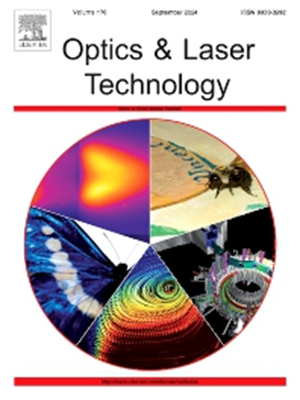Central serous retinopathy classification with deep learning-based multilevel feature extraction from optical coherence tomography images
IF 4.6
2区 物理与天体物理
Q1 OPTICS
引用次数: 0
Abstract
Central Serous Chorioretinopathy (CSCR) is an ocular disease characterized by fluid accumulation under the retina, which can lead to permanent visual impairment if not diagnosed early. This study presents a deep learning-based Convolutional Neural Network (CNN) model designed to automatically diagnose acute and chronic CSCR from Optical Coherence Tomography (OCT) images through multi-level feature extraction. The proposed CNN architecture consists of consecutive layers like a traditional CNN. However, it also extracts various features by creating feature maps at four different levels (F1, F2, F3, F4) for the final feature map. The model processes information using group-wise convolution and Pointwise Convolution Block (PCB) at each level. In this way, each feature group is further processed to obtain more representative features, enabling more independent learning. After the PCB outputs, the 4 feature maps are vectorized and combined, thus creating the final feature map. Finally, classification prediction scores are obtained by applying a fully connected layer and softmax function to this feature map. The experimental study utilized two datasets obtained from Elazığ Ophthalmology Polyclinic. The dataset includes 3860 OCT images from 488 individuals, with images categorized into acute CSCR, chronic CSCR, wet AMD, dry AMD, and healthy controls. Our proposed method achieves an increase in accuracy of 0.77%, attaining 96.40% compared to the highest previous accuracy of 95.73% by ResNet101. Precision is enhanced by 0.95%, reaching 95.16% over ResNet101′s 94.21%. The sensitivity (recall) is improved by 0.90%, achieving 95.65% versus ResNet101′s 94.75%. Additionally, the F1 score is increased by 0.93%, attaining 95.38% compared to ResNet101′s 94.45%. These results illustrate the effectiveness of our method, offering more precise and reliable diagnostic capabilities in OCT image classification. In conclusion, this study demonstrates the potential of artificial intelligence-supported diagnostic tools in the analysis of OCT images and contributes significantly to the development of early diagnosis and treatment strategies.
求助全文
约1分钟内获得全文
求助全文
来源期刊
CiteScore
8.50
自引率
10.00%
发文量
1060
审稿时长
3.4 months
期刊介绍:
Optics & Laser Technology aims to provide a vehicle for the publication of a broad range of high quality research and review papers in those fields of scientific and engineering research appertaining to the development and application of the technology of optics and lasers. Papers describing original work in these areas are submitted to rigorous refereeing prior to acceptance for publication.
The scope of Optics & Laser Technology encompasses, but is not restricted to, the following areas:
•development in all types of lasers
•developments in optoelectronic devices and photonics
•developments in new photonics and optical concepts
•developments in conventional optics, optical instruments and components
•techniques of optical metrology, including interferometry and optical fibre sensors
•LIDAR and other non-contact optical measurement techniques, including optical methods in heat and fluid flow
•applications of lasers to materials processing, optical NDT display (including holography) and optical communication
•research and development in the field of laser safety including studies of hazards resulting from the applications of lasers (laser safety, hazards of laser fume)
•developments in optical computing and optical information processing
•developments in new optical materials
•developments in new optical characterization methods and techniques
•developments in quantum optics
•developments in light assisted micro and nanofabrication methods and techniques
•developments in nanophotonics and biophotonics
•developments in imaging processing and systems

 求助内容:
求助内容: 应助结果提醒方式:
应助结果提醒方式:


